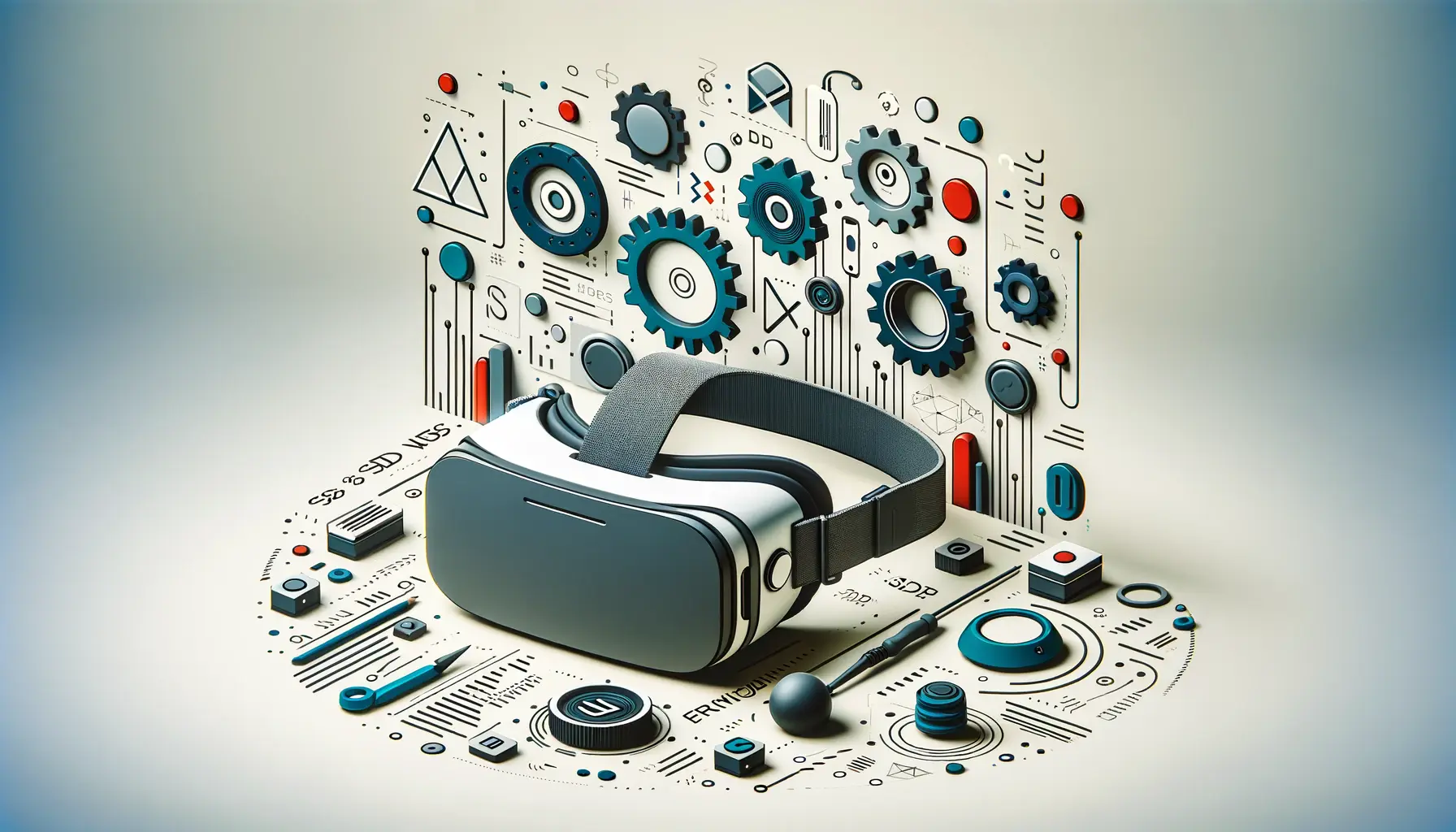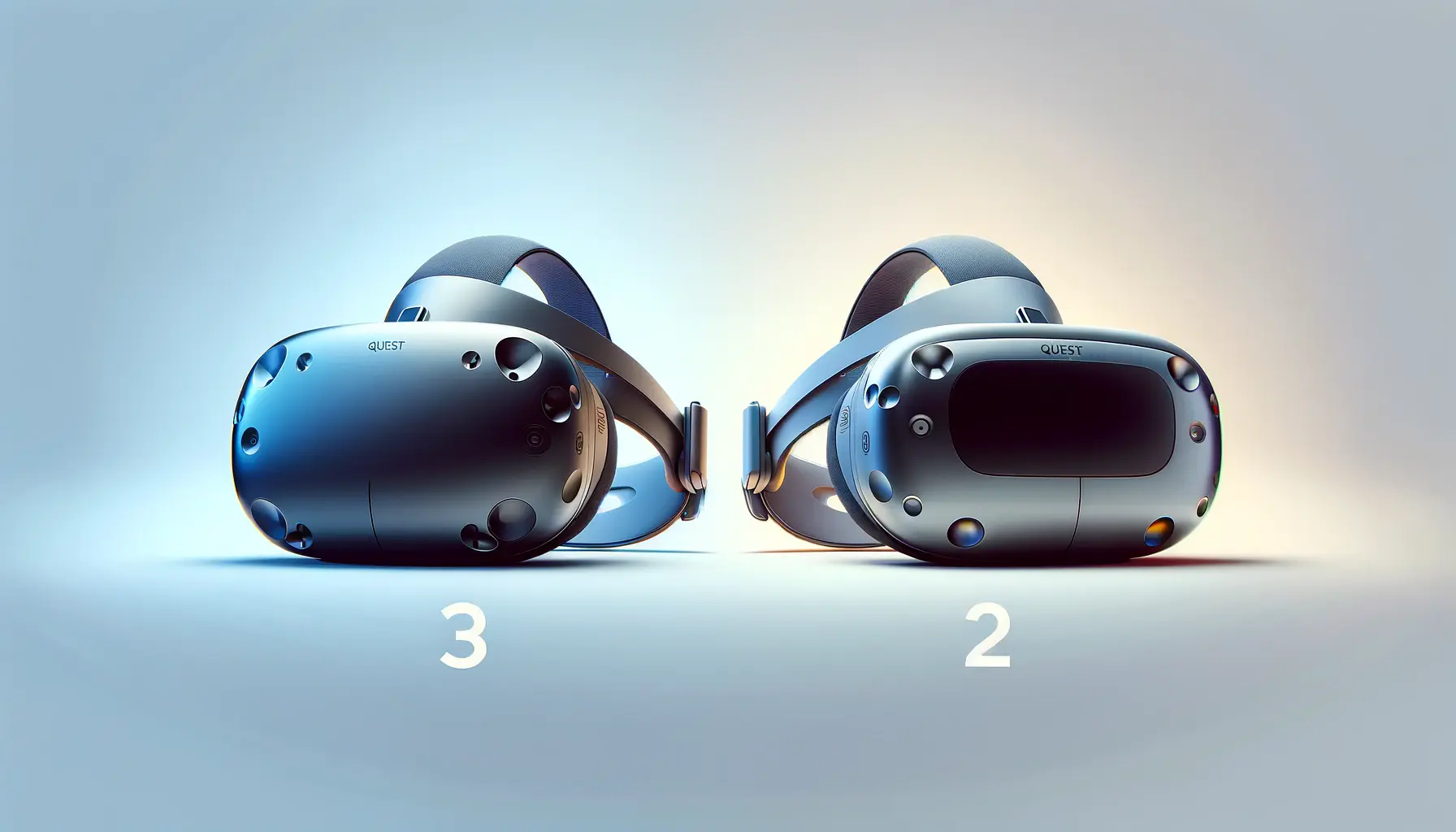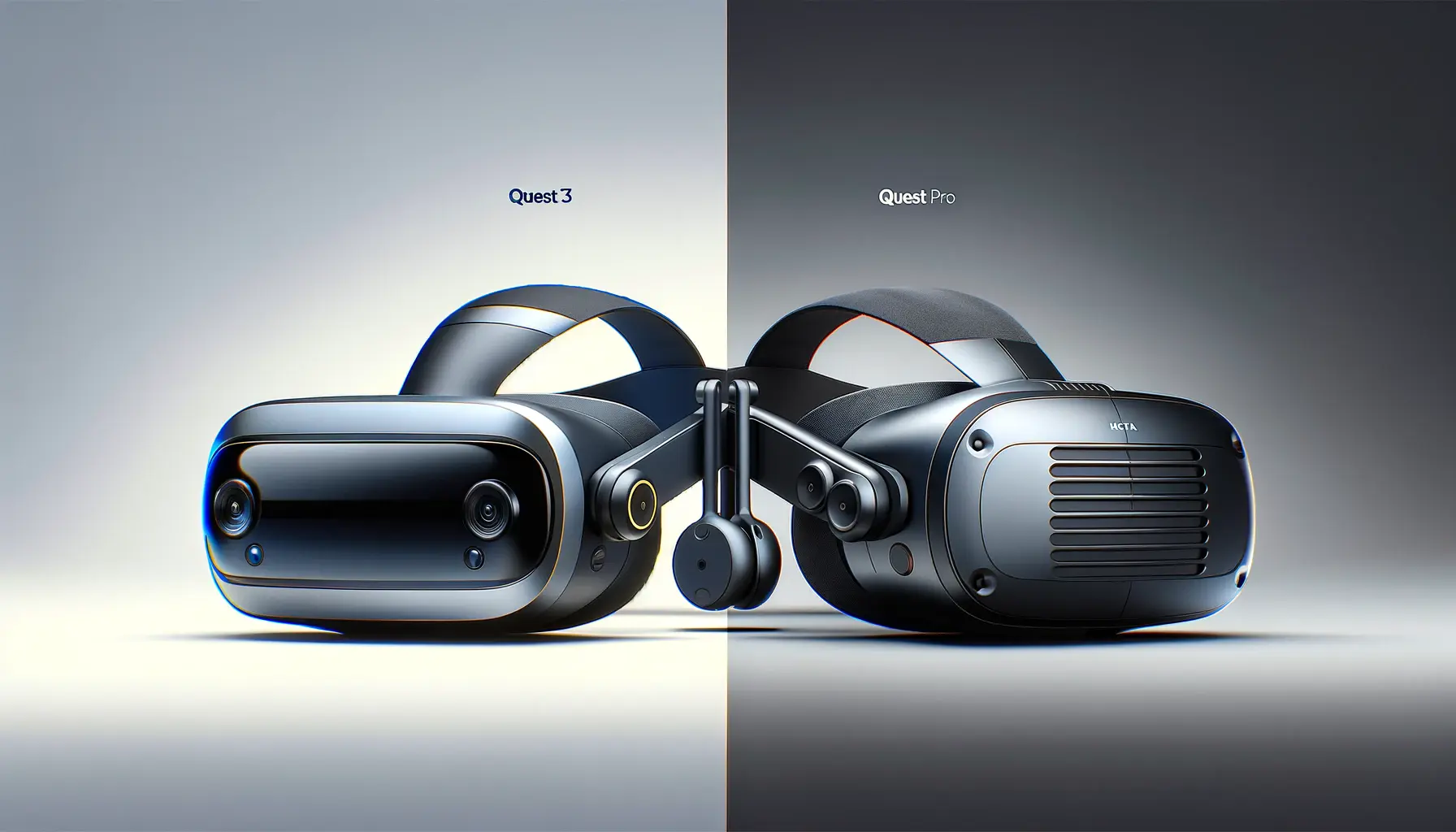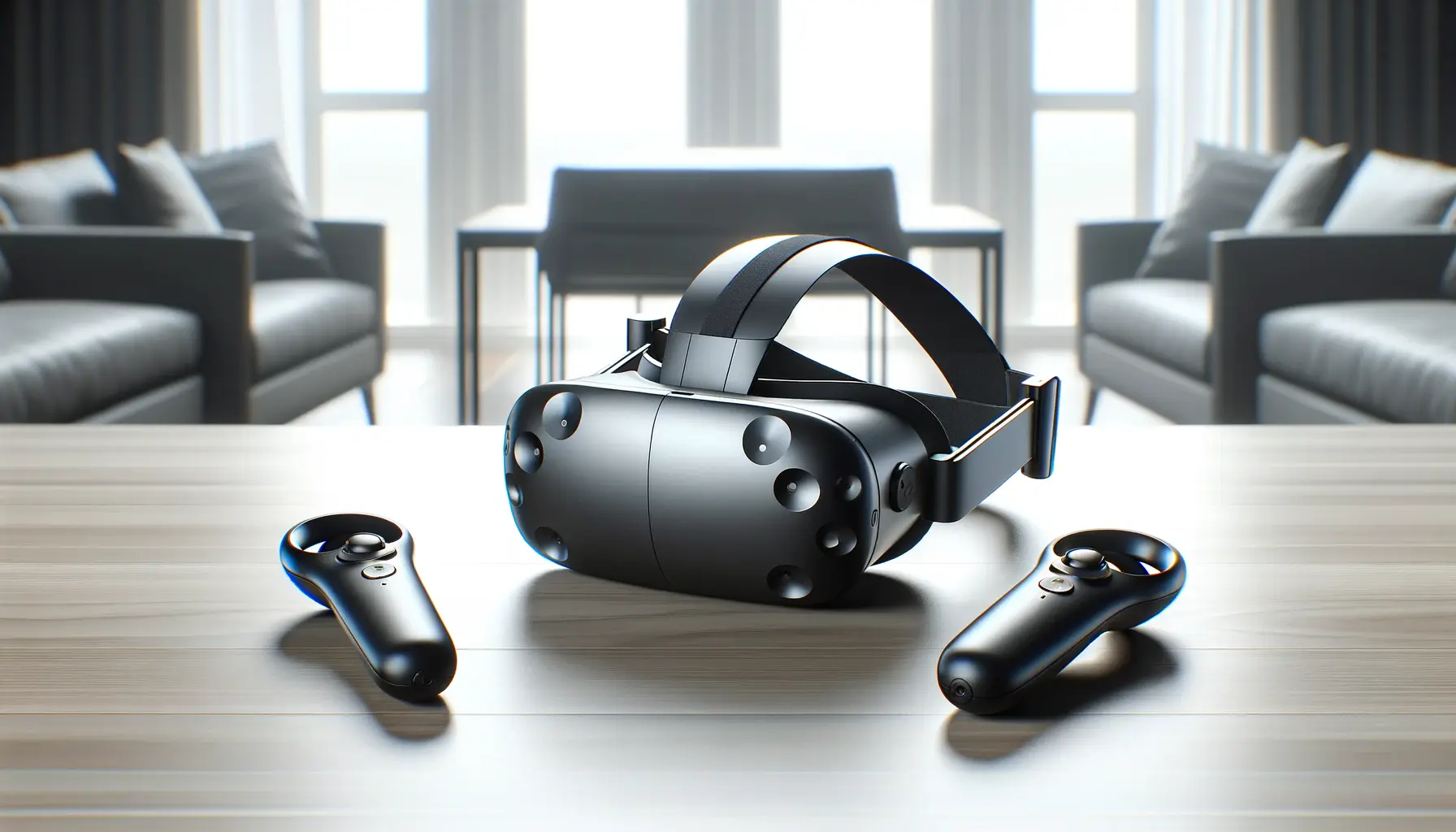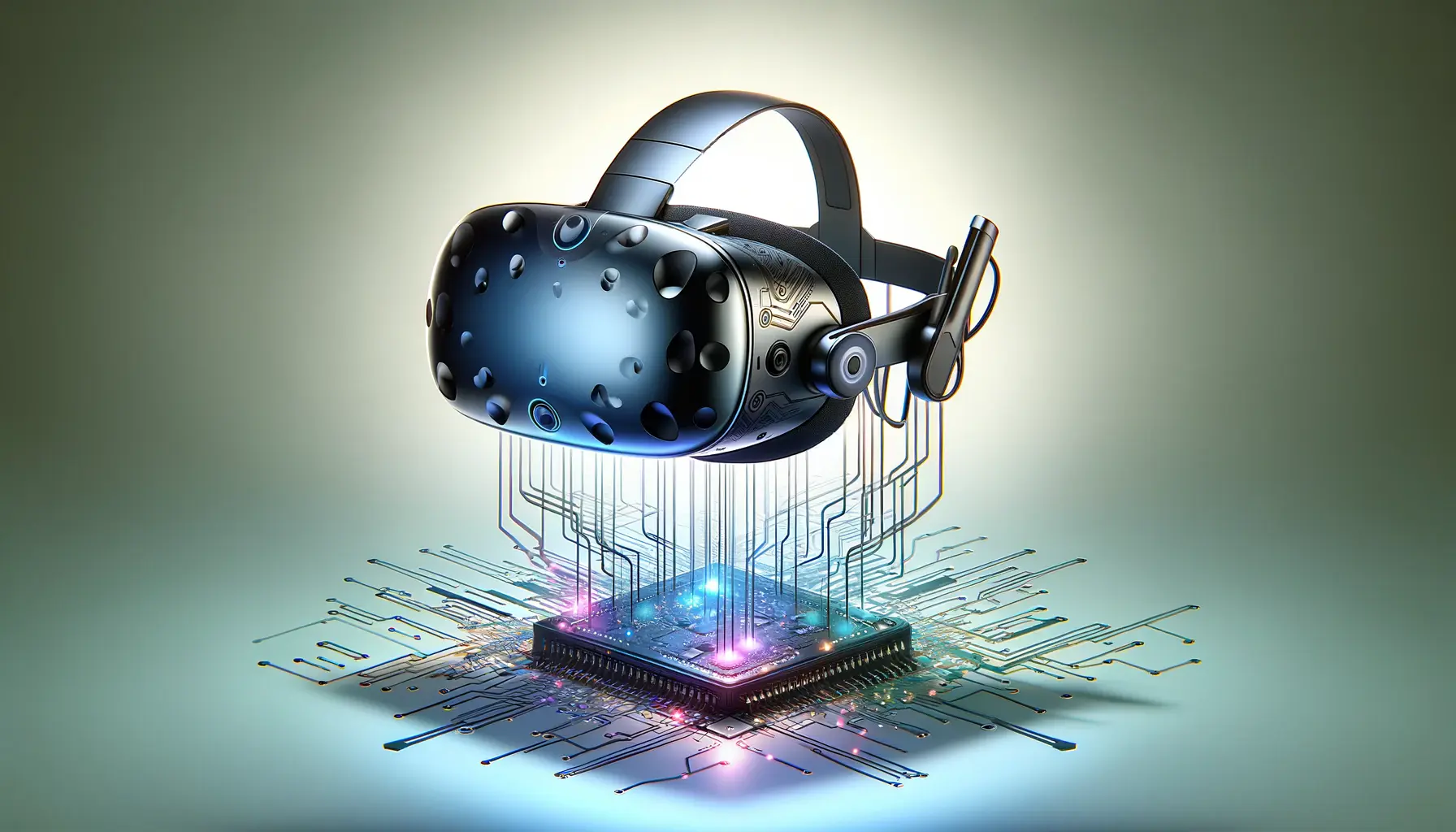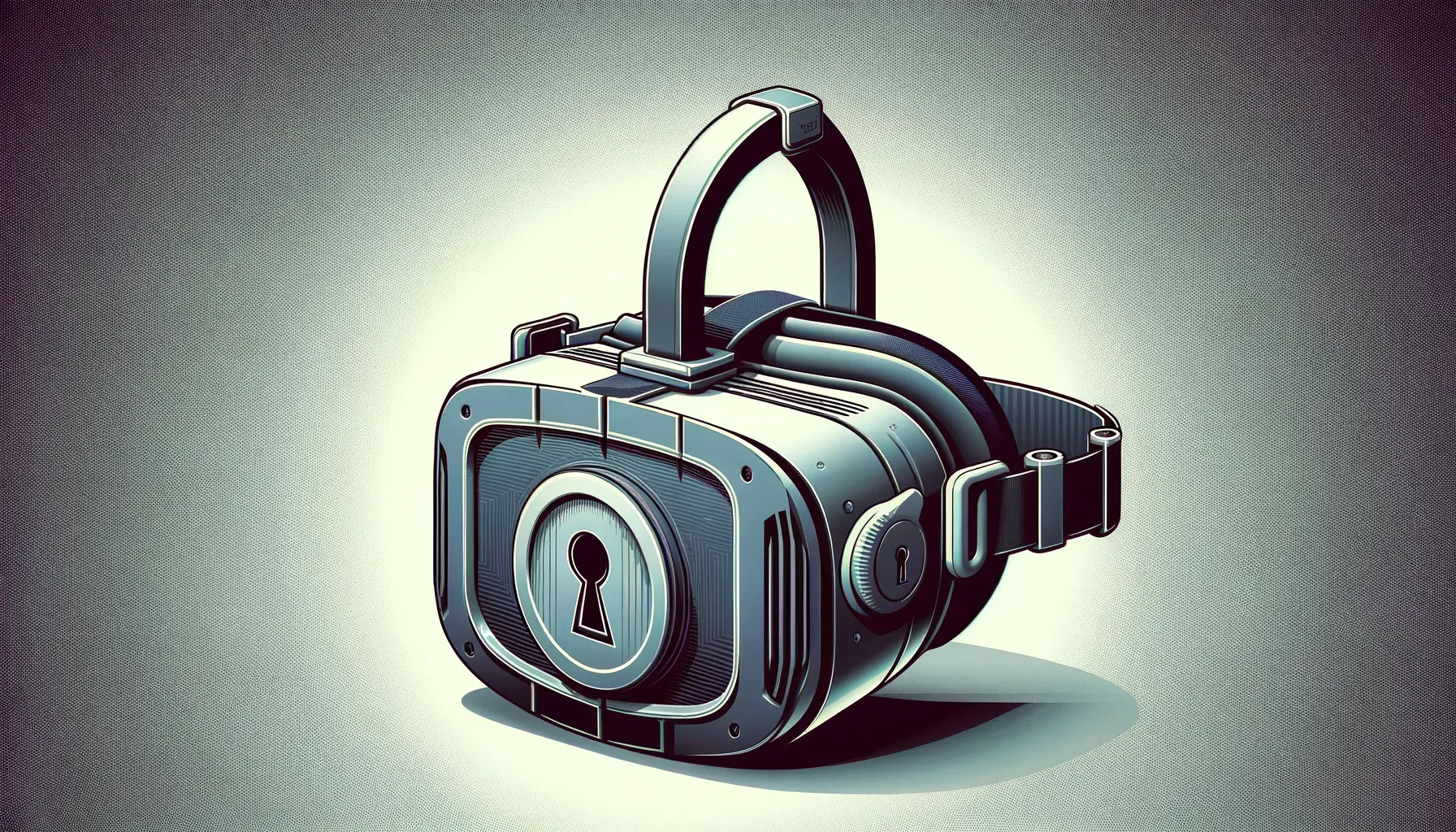The Meta Quest 3 represents a significant leap forward in virtual reality (VR) technology, particularly in the realm of hand tracking.
This innovative feature allows users to interact with digital environments in a more intuitive and natural way than ever before.
By eliminating the need for physical controllers, hand tracking on the Quest 3 offers a groundbreaking level of immersion in VR experiences.
This article delves into the mechanics, benefits, and applications of hand tracking technology, providing a comprehensive understanding of its impact on the future of virtual reality.
At its core, hand tracking technology utilizes sophisticated sensors and algorithms to accurately detect and interpret the movements of a user’s hands and fingers.
This capability transforms how users engage with VR, enabling them to manipulate objects, navigate menus, and communicate through gestures directly.
The Quest 3’s advanced hand tracking system represents a significant advancement in VR technology, promising to enhance the accessibility and enjoyment of VR for users worldwide.
- Understanding Hand Tracking Technology
- Benefits of Hand Tracking in VR
- Applications of Hand Tracking in VR
- Challenges and Limitations of Hand Tracking
- Improving Hand Tracking Experience
- Future of Hand Tracking in VR
- Integrating Hand Tracking in VR Development
- Embracing the Future with Quest 3 Hand Tracking
- Quest 3 Hand Tracking: Frequently Asked Questions
Understanding Hand Tracking Technology
The Quest 3’s hand tracking technology is powered by a combination of infrared cameras and artificial intelligence (AI) algorithms.
These cameras, positioned on the front of the headset, capture the intricate movements of the user’s hands and fingers in real-time.
The AI algorithms then analyze this data, accurately translating physical gestures into digital actions within the VR environment.
This seamless integration of hardware and software results in a highly responsive and intuitive hand tracking system.
One of the key challenges in developing effective hand tracking technology is ensuring accuracy and reliability across a wide range of hand shapes, sizes, and movements.
The Quest 3 addresses this challenge through machine learning, which allows the system to continuously improve its gesture recognition capabilities based on user interactions.
This adaptive approach ensures that the hand tracking system remains effective and accurate, even as users perform complex or rapid movements.
Components of the Quest 3 Hand Tracking System
- Infrared Cameras: Capture the movements of the user’s hands and fingers.
- AI Algorithms: Analyze the camera data to interpret gestures and movements.
- Machine Learning: Enables the system to adapt and improve gesture recognition over time.
The integration of these components results in a hand tracking system that is not only technologically advanced but also highly user-friendly.
It opens up new possibilities for interaction within VR, making the digital world more accessible and engaging for users.
The Quest 3’s hand tracking technology marks a significant milestone in the evolution of virtual reality, offering users an unprecedented level of immersion and interaction.
Benefits of Hand Tracking in VR
The introduction of hand tracking in the Meta Quest 3 brings a host of benefits that significantly enhance the user experience in virtual reality.
This technology not only simplifies interactions within the VR environment but also makes them more intuitive and engaging.
By allowing users to use their hands naturally, the Quest 3 creates a more immersive and accessible VR experience for everyone, from seasoned gamers to first-time users.
One of the most notable advantages of hand tracking is the elimination of physical controllers.
This not only reduces the learning curve for new users but also allows for a more direct and intuitive interaction with the virtual world.
Users can grab, push, pull, and manipulate virtual objects just as they would in the real world, creating a seamless bridge between physical and digital realms.
Enhanced Immersion and Realism
Hand tracking significantly increases the level of immersion in VR experiences.
By accurately mirroring the movements of the user’s hands and fingers, the Quest 3 makes the virtual environment feel more real and tangible.
This heightened sense of presence can enhance the emotional impact of VR applications, from gaming and simulation to education and training.
Moreover, the realism brought about by hand tracking can significantly improve the effectiveness of VR as a tool for learning and skill development.
For instance, medical students can practice surgical procedures in a risk-free virtual environment, benefiting from the realistic manipulation of virtual tools and instruments.
Accessibility and Ease of Use
Another significant benefit of hand tracking on the Quest 3 is its contribution to making VR more accessible.
Users with limited mobility or those who find traditional controllers cumbersome or unintuitive can now engage with VR content more easily.
This inclusivity extends the reach of VR technology, opening up new possibilities for its application in rehabilitation, education, and beyond.
Furthermore, hand tracking simplifies the user interface and interaction within VR environments.
Navigating menus, selecting options, and entering text become more straightforward when users can simply point and gesture.
This ease of use enhances the overall user experience, making VR more enjoyable and less frustrating for all users.
The integration of hand tracking in the Quest 3 not only advances the technology of virtual reality but also democratizes access to it, paving the way for more innovative and inclusive applications of VR in the future.
Applications of Hand Tracking in VR
Hand tracking technology in the Meta Quest 3 has opened up a myriad of applications across various sectors.
By providing a more natural and intuitive way to interact with virtual environments, hand tracking extends the utility of VR beyond gaming into fields such as education, healthcare, and professional training.
This versatility showcases the transformative potential of VR technology when enhanced with accurate hand tracking capabilities.
The following are some key areas where hand tracking technology is making a significant impact:
Education and Learning
- Interactive Learning: Students can engage with educational content in a hands-on manner, manipulating virtual objects to explore scientific concepts, historical artifacts, and more.
- Language Learning: Hand tracking enables learners to practice sign language in an immersive environment, receiving immediate feedback on their gestures.
Healthcare and Rehabilitation
- Physical Therapy: Patients can perform guided exercises in VR, with hand tracking ensuring they are completing movements accurately for effective rehabilitation.
- Surgical Training: Medical professionals can simulate surgical procedures, using their hands to interact with virtual tools and patient anatomy.
Professional Training
- Technical Skills Development: Workers can learn to operate machinery or perform complex tasks in a safe, virtual setting, using their hands to gain practical experience.
- Soft Skills Training: Hand tracking allows for realistic simulations of interpersonal interactions, helping professionals practice communication and negotiation skills.
Gaming and Entertainment
- Immersive Gameplay: Gamers can use their hands to cast spells, solve puzzles, and interact with game environments in a more immersive and engaging way.
- Virtual Music Creation: Musicians can play virtual instruments with their hands, experimenting with sounds and compositions in a virtual studio.
Art and Design
- 3D Modeling: Artists and designers can sculpt and manipulate 3D models with their hands, allowing for a more intuitive creative process.
- Virtual Painting: Hand tracking enables users to paint and draw in 3D space, creating art in a completely new way.
The versatility of hand tracking technology in the Quest 3 demonstrates its potential to revolutionize not only gaming but also professional training, education, healthcare, and creative industries.
Challenges and Limitations of Hand Tracking
While hand tracking technology in the Meta Quest 3 offers numerous advantages and has broadened the scope of virtual reality applications, it is not without its challenges and limitations.
Understanding these hurdles is crucial for developers and users alike to fully leverage the technology while being mindful of its current constraints.
One of the primary challenges is ensuring consistent accuracy and responsiveness across all user interactions.
Despite significant advancements, hand tracking technology can sometimes struggle with complex gestures or rapid movements, leading to less than optimal user experiences.
Accuracy and Precision
Hand tracking technology relies heavily on the Quest 3’s cameras and AI algorithms to interpret user gestures.
While impressive, this system can occasionally misinterpret gestures or lose track of hands, especially in environments with poor lighting or when hands move outside the camera’s field of view.
This can disrupt the immersive experience and may require users to repeat gestures to achieve the desired outcome.
Developers are continually working to improve the accuracy and precision of hand tracking through software updates and machine learning.
However, users may still encounter limitations in certain scenarios, highlighting the need for ongoing advancements in this area.
Environmental Constraints
The effectiveness of hand tracking can be influenced by the user’s environment.
Factors such as lighting conditions, background clutter, and reflective surfaces can impact the system’s ability to accurately track hand movements.
Users need to be in environments that are conducive to optimal tracking performance, which may not always be feasible in everyday settings.
To mitigate these environmental constraints, users are advised to use the Quest 3 in well-lit areas with minimal background interference.
Developers are also exploring ways to enhance the system’s robustness to varying environmental conditions.
Gesture Recognition Complexity
Another challenge lies in the system’s ability to recognize a wide range of gestures.
While basic gestures are generally tracked with high accuracy, more complex hand configurations or subtle finger movements can be difficult for the system to interpret.
This limitation can affect applications requiring precise hand and finger movements, such as playing musical instruments or detailed artistic creation.
Advancements in AI and sensor technology are expected to gradually overcome these challenges, expanding the range of gestures that can be accurately recognized and tracked by the system.
Despite its transformative potential, hand tracking technology in the Quest 3 faces challenges related to accuracy, environmental constraints, and gesture complexity, underscoring the importance of continued research and development in this field.
Improving Hand Tracking Experience
Enhancing the hand tracking experience on the Meta Quest 3 involves addressing the challenges and limitations inherent in current technology.
Both developers and users can take steps to optimize hand tracking performance, ensuring a more seamless and enjoyable interaction with virtual environments.
Here are strategies and tips for improving the hand tracking experience:
Optimizing Environmental Conditions
- Ensure Adequate Lighting: Use the Quest 3 in well-lit areas to improve the infrared cameras’ ability to detect hand movements accurately.
- Minimize Background Clutter: A clean and uncluttered background helps the system focus on hand movements without distractions.
- Avoid Reflective Surfaces: Mirrors and other reflective objects can confuse the tracking system, so it’s best to avoid them in your VR space.
Hand Positioning and Movement
- Keep Hands Within View: Ensure your hands are within the field of view of the Quest 3’s cameras for consistent tracking.
- Avoid Rapid Movements: While the system can track fast movements, extremely quick gestures might not be captured accurately. Slow down if you notice tracking issues.
- Use Clear Gestures: Simple, distinct gestures are more easily recognized by the system than complex or subtle movements.
Software Updates and Customization
- Regularly Update Your Quest 3: Meta frequently releases software updates that can improve hand tracking accuracy and performance.
- Customize Hand Tracking Settings: Explore the Quest 3’s settings to adjust hand tracking sensitivity and other parameters to suit your preferences.
- Provide Feedback to Developers: If you encounter specific issues with hand tracking, providing feedback can help developers address these challenges in future updates.
Using Hand Tracking-Compatible Applications
Not all VR applications are optimized for hand tracking.
Using apps and games designed with hand tracking in mind can significantly enhance your experience.
Developers are increasingly creating content that leverages the unique capabilities of hand tracking, offering more intuitive and immersive interactions.
By following these guidelines and remaining patient as technology continues to evolve, users can enjoy the benefits of hand tracking on the Quest 3.
As developers refine the system and incorporate user feedback, we can expect ongoing improvements in hand tracking accuracy, responsiveness, and overall user experience.
Optimizing environmental conditions, practicing clear hand positioning, staying updated with software enhancements, and choosing hand tracking-compatible applications are key to improving the hand tracking experience on the Quest 3.
Future of Hand Tracking in VR
The future of hand tracking in virtual reality (VR) looks promising, with ongoing advancements poised to further enhance the immersive experience of users.
As technology evolves, we can anticipate significant improvements in accuracy, responsiveness, and the range of interactions possible through hand tracking.
This progress will not only benefit the Meta Quest 3 but also shape the development of future VR devices and applications.
Emerging technologies and research in the field of VR are focused on overcoming current limitations, pushing the boundaries of what’s possible with hand tracking.
These innovations promise to make VR experiences more seamless, intuitive, and engaging for users across various applications.
Advancements in Sensor Technology
- Improved Precision: Future VR headsets may incorporate more advanced sensors capable of capturing even the most subtle hand and finger movements with high precision.
- Wider Tracking Range: Next-generation sensors could offer an expanded field of view, ensuring hands remain tracked even when moved outside the current limited range.
Enhanced AI Algorithms
- Smarter Gesture Recognition: AI algorithms are expected to become more sophisticated, allowing for the recognition of a broader array of gestures and reducing misinterpretations.
- Personalized Tracking: Machine learning techniques could enable VR systems to adapt to individual users’ hand shapes and movement patterns, improving accuracy over time.
Integration with Other Technologies
- Haptic Feedback: Combining hand tracking with haptic feedback technology could provide tactile sensations that mimic the feel of touching real objects, enhancing realism.
- Augmented Reality (AR) Integration: Hand tracking might be seamlessly integrated with AR technologies, blurring the lines between the physical and virtual worlds even further.
Broader Application and Accessibility
As hand tracking technology matures, its applications are expected to expand beyond gaming and entertainment.
We may see its integration into more fields such as remote work, virtual meetings, education, and specialized training simulations.
Moreover, improved hand tracking will make VR more accessible to people with disabilities, offering new ways for interaction and communication within virtual spaces.
The ongoing research and development in hand tracking technology signify a bright future for VR.
With each breakthrough, VR becomes more integrated into our daily lives, offering new opportunities for learning, entertainment, and social interaction.
The Meta Quest 3’s current hand tracking capabilities are just the beginning, with much more exciting developments on the horizon.
The evolution of hand tracking technology will continue to revolutionize the VR experience, making it more immersive, intuitive, and accessible for a wider range of users and applications.
Integrating Hand Tracking in VR Development
The integration of hand tracking technology into virtual reality (VR) development is transforming the way developers approach VR content creation.
With the Meta Quest 3 leading the charge, the possibilities for creating more natural and intuitive VR experiences are expanding.
For developers, understanding how to effectively incorporate hand tracking into their projects is crucial for leveraging this technology’s full potential.
This integration not only requires technical know-how but also a creative rethinking of user interaction within virtual environments.
Developers must consider how hand gestures can replace traditional controller inputs and how to design VR experiences that are both immersive and intuitive.
Designing for Hand Tracking
- User-Centric Design: Focus on creating experiences that feel natural and intuitive to the user, leveraging hand gestures that are commonly used in the real world.
- Gesture Library Development: Build a comprehensive library of hand gestures, ensuring a wide range of interactions is possible within your VR application.
Optimizing for Performance and Accuracy
- Performance Testing: Rigorously test hand tracking performance under various conditions to ensure consistent accuracy and responsiveness.
- Feedback Mechanisms: Implement visual or auditory feedback for recognized gestures to help users understand when their actions have been successfully interpreted.
Enhancing Immersion Through Interaction
- Interactive Objects: Design virtual objects that respond realistically to hand interactions, such as buttons that press down, objects that can be grabbed and manipulated, or surfaces that react to touch.
- Environmental Interactions: Allow users to interact with the VR environment in meaningful ways, such as opening doors, drawing on surfaces, or using tools and instruments.
Accessibility Considerations
Hand tracking opens up new avenues for making VR more accessible to users with disabilities.
Developers should consider how hand tracking can be used to create alternative control schemes or assistive tools within their applications.
This might include customizing the sensitivity of gesture recognition or providing alternative interaction methods for users with limited hand mobility.
The integration of hand tracking in VR development represents a significant shift towards more immersive and natural user experiences.
As technology continues to evolve, developers have the opportunity to explore new frontiers in VR interaction, creating content that is not only visually stunning but also deeply engaging and accessible.
The Meta Quest 3’s hand tracking capabilities are just the beginning, offering a glimpse into the future of VR development.
Effective integration of hand tracking in VR development requires a balance between technical optimization, creative design, user accessibility, and immersive interaction, setting the stage for the next generation of VR experiences.
Embracing the Future with Quest 3 Hand Tracking
The advent of hand tracking on the Meta Quest 3 has ushered in a new era of virtual reality, one where the barriers between the digital and the physical blur more than ever before.
This technology, with its promise of intuitive and natural interaction within virtual environments, stands as a testament to the rapid advancements in VR.
As we have explored, hand tracking offers a myriad of benefits, from enhanced immersion and realism to increased accessibility, making VR experiences more engaging and inclusive.
The Path Forward
Despite the challenges and limitations currently faced by hand tracking technology, the future looks bright.
With ongoing improvements in sensor accuracy, AI algorithms, and integration with other technologies, hand tracking is set to become even more sophisticated.
These advancements will not only refine the user experience but also broaden the scope of VR’s application in education, healthcare, professional training, and beyond.
Developers at the Helm
The role of developers in this evolution cannot be overstated.
By designing VR experiences specifically for hand tracking, optimizing for performance and accuracy, and considering accessibility, developers are pivotal in pushing the boundaries of what’s possible with the Quest 3.
Their creative and technical expertise is crucial in realizing the full potential of hand tracking in VR.
A Call to Action
- For users, embracing the Quest 3 hand tracking means being at the forefront of experiencing the next level of digital interaction.
- For developers, it presents an opportunity to innovate and create VR content that is more immersive, intuitive, and accessible than ever before.
- For the industry, it signals a shift towards more natural user interfaces, which could redefine the standards of virtual interaction.
In conclusion, the Quest 3 hand tracking technology is not just a feature; it’s a harbinger of the future of virtual reality.
It represents a step towards a world where our digital and physical realities are intertwined more seamlessly.
As this technology continues to evolve and improve, it will undoubtedly open up new possibilities for users and creators alike, making the virtual world more accessible, engaging, and real than ever before.
Quest 3 Hand Tracking: Frequently Asked Questions
Explore common inquiries about the innovative hand tracking feature of the Meta Quest 3, designed to enhance your virtual reality experience.
Activate hand tracking by going to the Settings menu on your Quest 3, selecting ‘Hand Tracking’ under ‘Device,’ and toggling it on.
Not all apps support hand tracking. Look for apps labeled with hand tracking compatibility in the Quest Store.
Yes, hand tracking is available on both Quest 2 and Quest 3, enhancing the VR experience across Meta headsets.
Quest 3’s hand tracking is highly accurate for most gestures, though complex movements may require practice for best results.
No additional accessories are needed; Quest 3’s built-in cameras and software handle hand tracking.
While hand tracking offers a new way to interact, it complements rather than replaces controllers, depending on the game’s requirements.
Limitations include occasional inaccuracies with fast or complex movements and dependency on good lighting conditions.
Hand tracking makes VR interactions more intuitive and immersive, allowing for natural gestures and movements within virtual environments.

